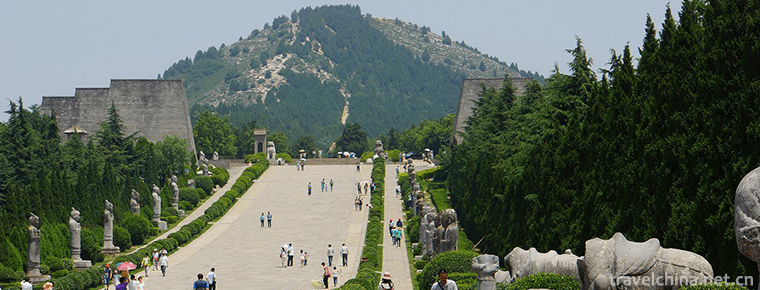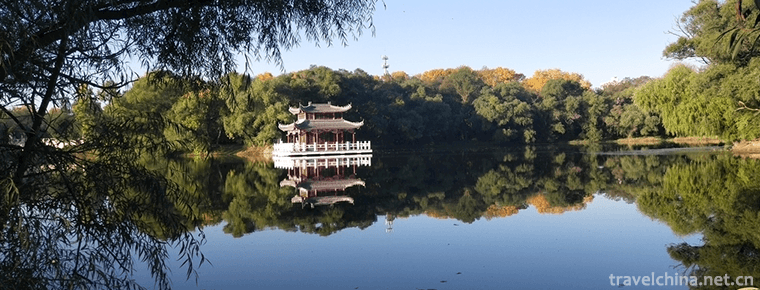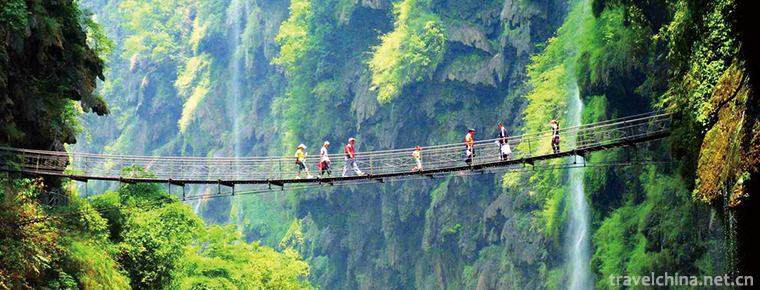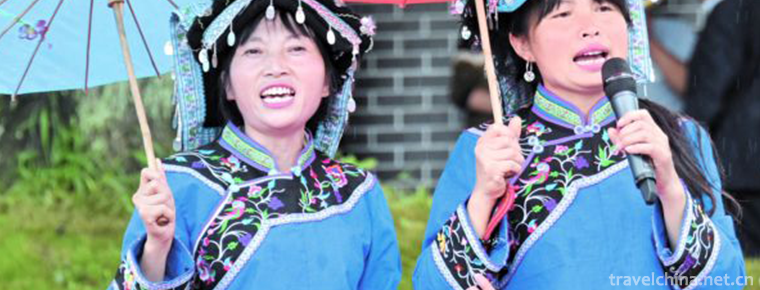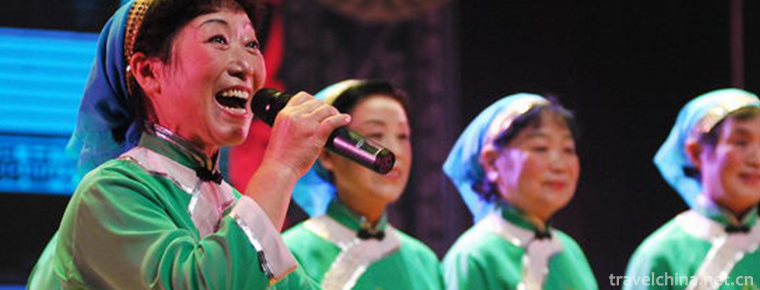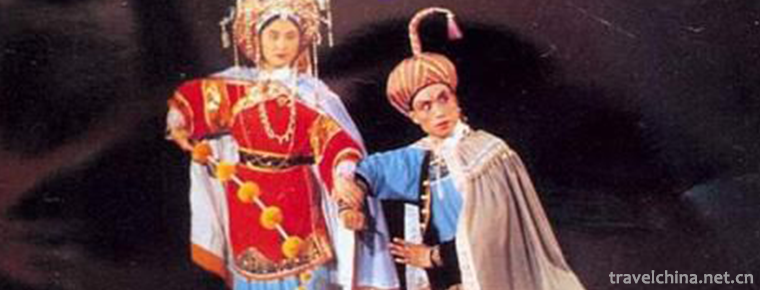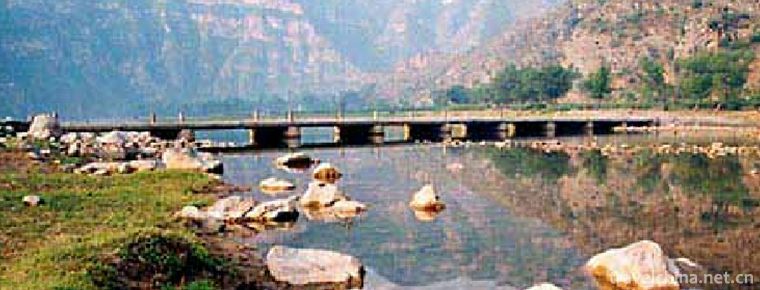Beijing Museum of Natural History
Address: 126 Tianqiao South Street, Dongcheng District, Beijing
Official website: http://www.bmnh.org.cn/
The Beijing Museum of Natural History is located in the overpass area on the central axis of the capital's southern city. It is backed by the Tiantan Park, a world cultural heritage, and has a special cultural environment in the face of modern overpass theatre. Its predecessor was the Preparatory Office of the Central Natural Museum, which was established in April 1951 and officially named the Beijing Museum of Natural History in 1962.
The Beijing Museum of Natural History is the first large-scale museum of natural history in China, which is mainly engaged in collecting specimens, scientific research and popularization of Science in the fields of paleontology, animals, plants and anthropology. He was named "National Youth Science and Technology Education Base" and "Beijing Patriotic Education Base" by the Central Propaganda Department and the Beijing Municipal Government, and "Science and Peace Education Base" by the Chinese Organizing Committee of UNESCO. In 2009, he was appraised as the first-level Museum by the State Administration of Cultural Relics.
More than 100,000 cultural relics, fossils and specimens are collected in the Beijing Museum of Nature. The Museum of Nature has four basic exhibitions and a dinosaur world exposition. The number of large-scale integrated paleomammal fossils in the library ranks second in the world, and the fossils of ancient elephants and dinosaurs in the Yellow River are well known at home and abroad.
Historical evolution
In March 1951, with the approval of the Culture and Education Committee of the Central Propaganda Department, the Central Ministry of Culture and the Chinese Academy of Sciences jointly established the Preparatory Committee for the Central Natural Museum. Vice-Minister Ding Xilin of the Ministry of Culture was also a chairman. The members included Pei Wen, Zheng Zuoxin, Zhang Chunlin and Hu Xianpi.
On April 2, 1951, the Preparatory Office of the Central Natural Museum was officially established. Its office is located in Wenhua Hall, Chuanxin Hall and Qing History Museum in the East China Gate of the Palace Museum. Pei Wen is also the director. The Ministry of Culture of the Central Committee and the Chinese Academy of Sciences jointly issue papers to collect specimens and exhibits from all over the country, and recruit business and administrative cadres from all parts of the country.
In 1955, the building of the Preparatory Office of the Central Natural Museum was approved and the South Street of Tianqiao was designated as the site. Three phases of construction were planned, namely, exhibition building, specimen building and office building. The exhibition hall was built 8,000 square meters during the first Five-Year Plan period and 1.2 million yuan was allocated for the first phase.
In October 1956, the new pavilion opened on South Street of Tianqiao.
In May 1958, the new museum was completed and its name was inscribed by Guo Moruo, a historian and writer. The relocation was completed in August, and the basic display of paleontology, animals and plants was completed.
In January 1959, the new museum was officially opened to the outside world. On April 1, the Ministry of Posts and Telecommunications of the People's Republic of China issued a set of two special stamps and a first-day cover. During the Great Leap Forward, the Preparatory Office of the Central Natural Museum was delegated to Beijing, under the Beijing Municipal Bureau of Culture.
In 1962, the Beijing Museum of Natural History was officially named. Professor Yang Zhongjian, a paleontologist, was the curator.
In 1975, the Beijing Museum of Nature was assigned to the leadership of the Beijing Science and Technology Bureau.
In 1979, Professor Pei Wen, a paleoanthropologist, succeeded the curator. To initiate and prepare the establishment of the Association of Natural Science Museums of China.
In 1980, the professional academic journals Beijing Museum of Nature Research Report and Nature Popular Science Journal were published.
In 1982, Professor Zhou Mingzhen, a paleontologist, took over as the curator. Editing and publishing a large-scale atlas, "Biological History Tutorial Theory".
In 1984, the Ecology Research Laboratory of Beijing Museum of Natural History established the Elk Ecology Experimental Center in Nanhaizi, Daxing, Beijing, and became a new research institution after the successful introduction of elk.
In 1985, the Beijing Museum of Nature was assigned to the Beijing Academy of Science and Technology.
In September 1992, Tian Jiabing Building, a prototype building funded by Hong Kong businessman Mr. Tian Jiabing and financed by Beijing Municipal Government, was completed.
In March 2008, 33 free open museums were selected in Beijing.
In April 2008, it was selected as the first 99 popular science bases in Beijing, as the base of popular science education and research and development, and the editorial department of Nature as the base of popular science media.
In May 2008, 79 first-class museums of the State Administration of Cultural Relics were selected.
On July 1, 2008, it was officially open to the public free of charge.
In September 2016, it was selected as the first batch of Chinese architectural heritage in the 20th century.
Guide to visit
Opening Hours
From 9:00 to 17:00, the museum will be open to the public all year round. It will be closed on Monday. There will be adjustments in winter and summer holidays, statutory holidays and a large number of spectators. Please pay attention to the announcement on the website at that time. Tickets are free.
From 14:00 on December 17, 2018, the Natural Museum has implemented a time-division booking system.
Visiting content
Basic Display: Animal Mystery, Plant World, Dinosaur Park, Ancient Mammals, Ancient Reptiles, Beauty of Animals, Animal-Human Friends, etc. (Note: Basic Display is a permanent exhibition of Beijing Museum of Nature, and visitors can visit it free of charge)
Temporary Exhibition: Darwin Exhibition (Note: The exhibition is free and visitors need to book at least one day in advance).
3-D Cinema Dinosaur Film
Show time:
Tuesday to Friday: 11:00 a.m., 13:45 p.m., 15:00 p.m.
Saturdays and Days: 10:30 a.m., 11:15 p.m. 13:40, 14:30, 15:40
Summer:
Tuesday to Friday: 10:00 a.m., 11:00 p.m. 13:40, 14:30, 15:40
Saturdays and Days: 10:30 a.m., 11:15 p.m., 13:00 p.m., 13:40 p.m., 14:30 p.m., 15:40 p.m.
Appointment method
In order to ensure the safety and quality of visitors, free tickets should be booked in advance for public visits to the Beijing Museum of Nature.
First, the way of appointment:
1. Telephone reservation:
Reservation time: Tuesday to Sunday, 9:00-16:00
2. Online booking:
Enter the ticket reservation system and make an appointment according to the prompt of the system.
II. Reservation Provisions:
1. Reservations must be made at least one day in advance, but tickets for the day of visit cannot be booked.
2. Reservation of tickets for the next day to 20 days is limited.
3. Audience booking should adopt the real-name system. Audience booking should register the information of the name, number of tickets, date of visit, ID card number and so on. Each person should not book more than three tickets at a time.
4. When a group visits an appointment, it must register the name of the unit, the name and ID card number of the person who leads the group on that day, the date of the visit, the contact method, the number of visitors and other information.
3. Free Ticket Collection Method: Successful booked visitors are requested to make an appointment with staff members when they go to the Ticket Office to collect free tickets before 16:00 on the visit day.
The name and reservation number of the person, the introduction letter of the unit and the valid certificate of the team are required when the group audience receives the ticket. If the ticket is overdue, the reservation will be regarded as invalid. Tickets must be visited on the same day and expired.
Ticket Collection Time: Tuesday to Sunday 9:00-16:00 (closed on Monday)
Visit notes
1. The basic exhibitions of the Beijing Museum of Nature are open to the public free of charge.
2. Opening time: Tuesday to Sunday from 9:00 to 17:00 (closed on Monday, closed at 16:00).
3. Visits to the Beijing Museum of Nature need to be booked in advance.
4. Alcoholics and irregular clothes refuse to enter the museum. Minor children should be accompanied by guardians.
5. Please accept the security inspection consciously. It is strictly forbidden to bring inflammable and explosive dangerous goods, control equipment and other dangerous goods into the library.
6. Please consciously observe the visiting order and obey the guidance and command of the staff.
Seventh, please consciously protect public facilities, maintain environmental hygiene, do not discard sundries, do not smoke in the library.
8. In case of major or temporary activities of the Beijing Museum of Nature, please follow the emergency arrangements of the Beijing Museum of Nature.
9. In case of relevant changes, the latest information released by the Beijing Museum of Nature shall prevail.







 /uploads/20181215/ec7c7e5963c72c6d293baa3974b37c74.png
/uploads/20181215/ec7c7e5963c72c6d293baa3974b37c74.png
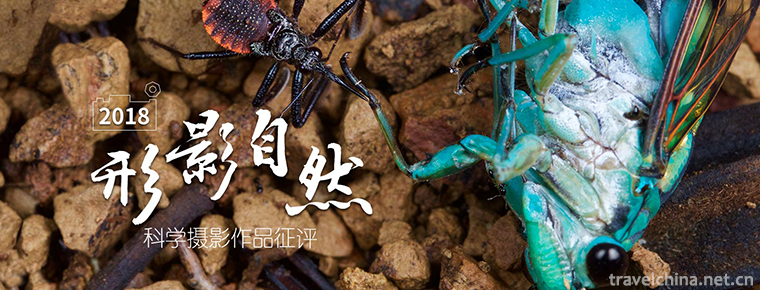
-
Qianling Scenic Area
Qianling Scenic Area, located in Qianxian County, Xianyang, Shaanxi Province, covers an area of 1002.71 square kilometers. Population: 580,000 (2011), postcode: 713300..
Views: 136 Time 2018-12-22 -
Longsha Park
Located in the center of Qiqihar city, Longsha Park has a history of one hundred years. It covers an area of 64 hectares, including 20 hectares of water..
Views: 149 Time 2019-02-06 -
Maling River Canyon
Maling River Gorge is located in Xingyi City, Guizhou Province. It is an important member of Xingyi National Geopark and a national scenic spot of the People's Republic of China. It is known as ".
Views: 269 Time 2019-02-06 -
Buyi Chabai Song Festival
The Buyi Chabaige Festival is a commemorative festival of the Buyi people in Xingyi, southwest Guizhou Province. It is held in Chabaichang, Dingxiao Town, Xingyi City.
Views: 152 Time 2019-04-04 -
Chaohu folk songs
Chaohu Folk Song, the local traditional music of Chaohu City, Anhui Province, is one of the national intangible cultural heritage. On May 20, 2006, Chaohu .
Views: 272 Time 2019-04-16 -
Guizhou opera
Guizhou Opera is one of the local operas popular in Guizhou Province. It evolved and developed from the opera Yangqin (also known as "Wenqin", "Guizhou Playing Ci") .
Views: 150 Time 2019-06-10 -
Legend of Yongding River
Yongding River legend is one of the local folklores in Beijing. Among many legends, the legend of river blocking is representative; the legend of Shijing Mountain and Shijing Mountain; the legend of b.
Views: 124 Time 2019-07-14 -
Bamboo Paper Making Skills
Bamboo paper production maintains a complete traditional process. It is manually made by dipping paper. There are 15 links and 72 processes from material selection to paper making. The production proc.
Views: 202 Time 2019-08-10 -
Notice for visiting Chengdu Giant Panda Base
Please don't make any noise. Don't make any abnormal or sharp sounds, which will disturb the wild animals. Giant pandas and other animals naturally like quiet environment and are sensitive to noise. In order to ensure the effect of your visit, please respect their living habits and keep a quiet environment..
Views: 74 Time 2020-12-13 -
Deyang scenic spot
There are Sanxingdui ancient Shu civilization sites in Deyang City, where a large number of national treasure level cultural relics such as bronze Dali Man, bronze mask, bronze sacred tree, gold stick and Bian Zhang were unearthed. There are also the pangtong.
Views: 300 Time 2020-12-14 -
Neijiang administrative division
Neijiang City governs 5 county-level administrative divisions (Municipal District 2, county-level city 1, county-2), and 83 township level administrative divisions (street 13, town 70). It covers an area of 5386 square kilometers and has a population of 4.27 million..
Views: 158 Time 2020-12-16 -
Neijiang social security
In 2019, there were 109600 people participating in the endowment insurance (including retirees) of government institutions, 842500 people of enterprise employees (including retirees), and 1501700 people of urban and rural residents. 52100 new urban jobs.
Views: 353 Time 2020-12-16
